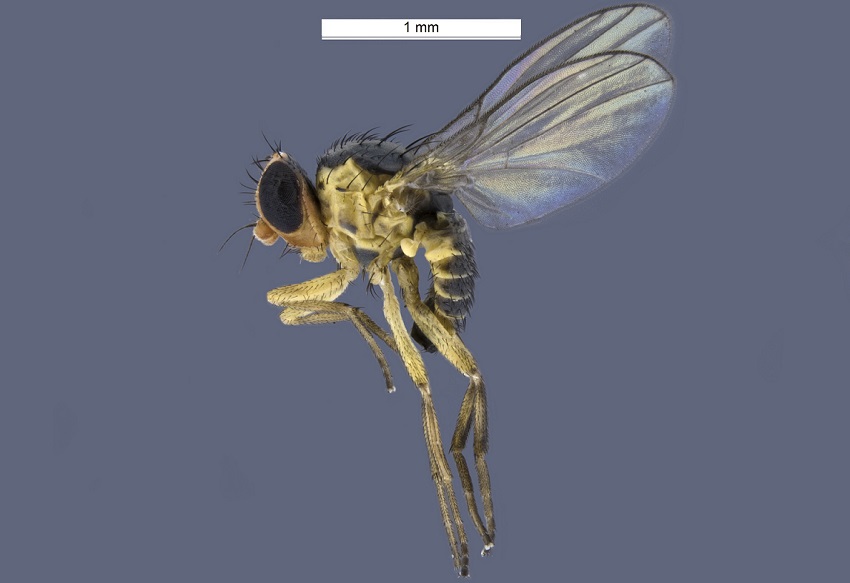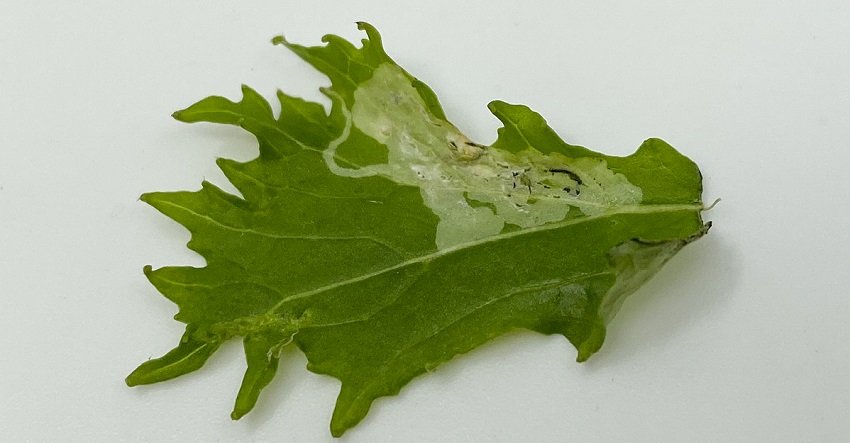
Released on: Wednesday 21 July 2021 - 15:15
The invasive exotic pest American serpentine leafminer (Liriomyza trifolii) has been found in northern Western Australia.
The Department of Primary Industries and Regional Development (DPIRD) confirmed the pest’s presence in WA from a sample collected near Kununurra, as part of the Commonwealth’s Northern Australia Quarantine Strategy surveillance program.
DPIRD is working with industry stakeholders and State and Commonwealth Governments to minimise the impact of the pest fly and its larvae on WA’s primary industries.
The national technical committee, the Consultative Committee on Emergency Plant Pests, has concluded while eradication may not be technically feasible, due to the pest’s biology, current distribution and wide range of host plants, more surveillance and data was required to make a determination.
The committee agreed that there may be measures that could be undertaken to limit the spread of American serpentine leafminer to other areas of Australia.
More information on the agreed course of action will be provided as soon as possible.
DPIRD Chief Plant Biosecurity Officer Sonya Broughton said the department was undertaking delimiting surveys in the Kununurra area, Broome, Carnarvon and Geraldton.
“This is the first time this species of leafminer has been found on the Australian mainland,” Dr Broughton said.
“American serpentine leafminer, so called because the larvae tunnel in leaves creating snake-like mines, is known to feed on more than 400 species from 29 plant families, including most vegetable and legume crops, as well as ornamental plants.
“The fly’s eggs, larvae and pupae can be spread through the movement of plant material, soil, clothing and equipment.
“We are working with growers as we survey production areas in the northern half of the State to determine the presence and spread of the pest.”
Permits are in place that cover the treatment of a number of exotic leafminer fly species, including American serpentine leafminer. More information is available from the Australian Pesticides and Veterinary Medicines Authority website.
“The insect is known to develop resistance so insecticide treatments should be used that incorporate resistance management strategies to minimise that risk,” Dr Broughton said.
“Overseas, management of leafminers, like the American serpentine leafminer, include the use of natural enemies, such as parasitoids that attack larvae, so good management practices should consider the use of pesticides that favour beneficial insects.”
DPIRD is considering contingencies to limit the spread of the pest. Details will be provided to industry as soon as available.
American serpentine leafminer is native to the Caribbean and south eastern United States and is found across the world.
Growers and gardeners are encouraged to monitor plants and to report any tunnelling leaf damage and suspect flies to the department to help demonstrate the absence and presence of the pest.
“American serpentine leafminer adult flies are one to two millimetres in size, grey-black in colour and distinguished by a prominent yellow area at the base of the wings,” Dr Broughton said.
“Damage from the pest can be identified by twisting white patterns on the leaf surface, caused by the tunnelling activity within the leaf of the white-yellow larvae, however, this is indistinguishable from other leaf mining flies.
“This tunnelling can impede plant photosynthesis, causing leaf death or premature leaf drop, resulting in yield losses, sunburn and reduced quality.”
Producers, agronomists and homeowners can report suspected American serpentine leafminer observations and damage to DPIRD’s Pest and Disease Information Service on 61 8 9368 3080, email padis@dpird.wa.gov.au or use the MyPestGuide Reporter app.
For more information, see Biosecurity alert: American serpentine leafminer.
Media contacts: Megan Broad/Katrina Bowers, media liaison 61 8 9368 3937
Image caption: The invasive exotic pest American serpentine leafminer has been confirmed in northern Western Australia. Report leaf tunnel damage and suspect flies to DPIRD.
Image caption (top image): American serpentine leafminer adult flies are one to two millimetres in size,
grey-black in colour and distinguished by a prominent yellow area at the base of the wings.



